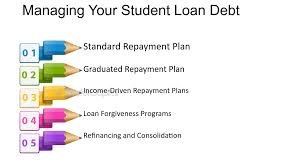
When I first started house hunting, I was filled with excitement and optimism. I imagined myself walking through charming neighborhoods and discovering the perfect place to call home. But as I toured property after property, I realized how easy it was to get caught up in the dream and overlook some serious warning signs. One house I fell in love with had beautiful hardwood floors and a cozy fireplace, but during the inspection, we discovered a sagging foundation and signs of past flooding in the basement. It was a tough call to walk away, but it taught me an invaluable lesson about the importance of staying alert to red flags.
That experience—and others along the way—inspired this list. Whether you’re a first-time buyer or a seasoned investor, it’s easy to let emotions guide the process. These red flags could indicate deeper issues that might cost you time, money, and peace of mind down the road. Here’s a comprehensive guide to the top 10 red flags to watch out for when searching for your perfect home.
House hunting is both an exciting and daunting experience. Whether you’re a first-time buyer or a seasoned investor, the thrill of finding a new place to call home can sometimes overshadow important warning signs. These red flags could indicate deeper issues that might cost you time, money, and peace of mind down the road. Here’s a comprehensive guide to the top 10 red flags to watch out for when searching for your perfect home.
1. Foundation and Structural Issues
One of the most critical aspects of any home is its foundation. Cracks in the walls, uneven floors, or doors and windows that stick can all be signs of structural problems. While small hairline cracks are generally normal, large or expanding cracks, especially around doorways or in the basement, can indicate serious foundation issues. Always consult a structural engineer if you have concerns.
2.Water Damage and Mold
Water damage is not always immediately visible. Look for stains on ceilings and walls, musty odors, or bubbling paint—all signs of possible water intrusion. Mold is another concern, especially black mold, which can pose serious health risks. Check under sinks, around windows, and in basements for signs of mold or mildew.
3. Inadequate Drainage and Grading
Poor drainage around the property can lead to water pooling near the foundation, which over time can cause severe structural damage. Check if the ground slopes away from the house and look for signs of standing water or erosion. Also, make sure that downspouts direct water well away from the home’s foundation.
4. Electrical Problems
Outdated or faulty wiring is not only a nuisance but also a major safety hazard. Flickering lights, frequent blown fuses, or outlets that don’t work can be signs of electrical issues. If the home still uses an old fuse box or has knob-and-tube wiring, it may require a complete electrical overhaul.
5. Plumbing Issues
Leaky pipes, low water pressure, or slow drainage are signs of plumbing problems. Rusty or corroded pipes can also be a red flag, indicating that the plumbing system is nearing the end of its lifespan. Inspect under sinks, around toilets, and in the basement for signs of water damage or pipe issues.
6. Pest Infestations
Signs of pests like termites, rodents, or ants can indicate a larger problem. Look for droppings, chewed wires or wood, and insect wings. Termite damage can be particularly costly to repair and might compromise the structural integrity of the home. A professional pest inspection is often a worthwhile investment.
7. Roofing and Gutter Conditions
A roof is one of the most expensive components of a home to replace. Check for missing or curled shingles, rusted flashing, or sagging areas. Gutters should be securely attached and free from debris. Poor roof and gutter maintenance can lead to leaks and water damage inside the home.
8. HVAC System Concerns
Heating, ventilation, and air conditioning systems are essential for comfort and air quality. Listen for strange noises, check the age of the unit, and inspect vents for airflow. Replacing or repairing HVAC systems can be costly, so it’s important to ensure they’re in good working order.
9. Neighborhood and Location Issues
A beautiful house in a problematic neighborhood can quickly become a regrettable purchase. Research crime rates, school quality, noise levels, and future development plans in the area. Visit the neighborhood at different times of day to get a true sense of the environment.
10. Seller Disclosure Gaps or Evasiveness
Trust your instincts when dealing with sellers. If they seem evasive or unwilling to answer questions, it could be a sign they’re hiding something. Review the seller’s disclosure carefully and consider hiring a real estate attorney to help you understand any legal nuances.
Conclusion
Buying a home is a major investment, and it’s crucial to approach the process with both excitement and caution. Recognizing these red flags can save you from future headaches and financial strain. Always conduct thorough inspections, ask the right questions, and consult with professionals when necessary. By staying vigilant, you’ll be better equipped to find a home that’s not just beautiful but also safe and sound.
Happy house hunting!






